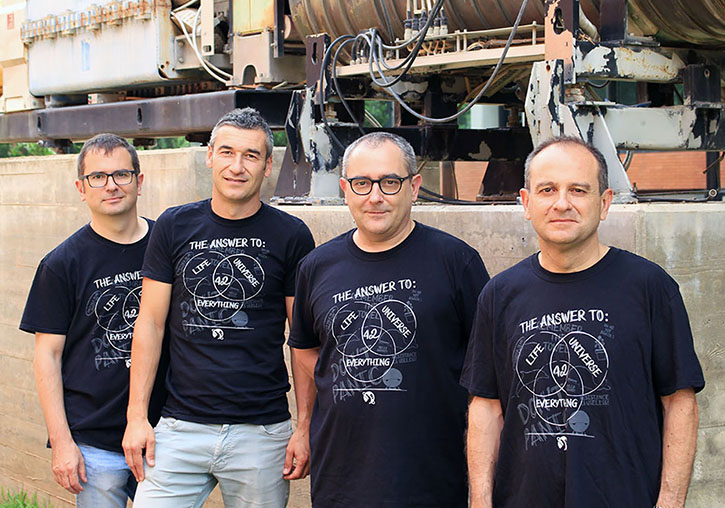
An international research group, including the Institute for Corpuscular Physics (IFIC), demonstrated that certain Artificial Intelligence (AI) strategies combined with assessments from radiologists increase mammography screening to detect cancer. The study is published in the Journal of the American Medical Association.
The study is based on the results obtained from Digital Mammography (DM) DREAM Challenge, an international competition run by IBM, by the researchers of IFIC (a mixed centre of the Universitat de València and CSIC) and the Institute of Telecommunications and Multimedia Applications (iTEAM) of the Universitat Politècnica de València. It is the only Spanish team which managed to got through to the final stage of the challenge.
For this, the team developed a prediction algorithm based on convolutional neural networks, an AI method that simulates the neurons of visual cortex and allows to classify the images in addition to the system self-learning. The group have also applied its own patented principles related to X-ray interpretation. The results of the Valencian team along with the other finalists have been published in Journal of the American Medical Association (JAMA Network Open).
“This challenge gave us a possibility to collaborate in AI projects with the clinical groups of the Valencian Community,” says Alberto Albiol, an associate professor at the UPV and an iTEAM group member. “It has opened new opportunities to apply machine learning strategies as the article explains.”
The work of the Valencian researchers is being developed in Artemisa, a new computational platform for AI of IFIC, funded by the European Union and the Valencian government (Generalitat Valenciana) within the operating 2014-2020 FEDER programme of the Valencian Community to acquire new infrastructures and equipment in research, development and innovation.
“With a sustainable AI application, we will be able to reduce the operational costs in healthcare,” highlights Francisco Albiol, a researcher at IFIC participating in the study. “The challenges arise from the part of algorithm and design and face the medical sector as the strategies are based on evidence. The grand-scale AI is one of the most promising technologies of sustainable healthcare,” he points out.
Digital Mammography (DM) DREAM Challenge involves more than 1200 researchers from all around the world. Led by IBM Research, Sage Bionetworks, and Kaiser Permanente Washington Research Institute, the contest concluded that a combining the methods with assessments of experts improves the accuracy of the medical tests. Kaiser Permanente Washington (KPW) and Karolinska Institute (KI) of Sweden provided hundreds of thousands of mammograms and clinical data preserving the anonymity of the patients.
“Our study suggests that a combination of AI algorithms and assessments from radiologists might help half a million women to avoid unnecessary diagnostic check-ups only in the United States,” summarises Gustavo Stolovitzky, director of the IBM programme for Translational Systems Biology and Nanobiotechnology at the Thomas J. Watson research centre and the founder of DREAM Challenges.
Mammography is the most common diagnostic method of early breast cancer detection. Even though this detection tool is mostly effective, mammography screenings should be assessed and interpreted by radiologists who visually checks it for the signs of cancer. As such, 40 million of women that do annual mammography check-ups in the US receive about 10% of “false positive” test results.
“An effective AI algorithm may help a radiologist reduce the chances of unnecessary medical check-ups and detect the clinically significant types of cancer. Consequently, the same algorithm would increase the value of mammography detection and improve the efficacy of damage and benefit relationships,” concludes doctor Christoph Lee of the Washington School of Medicine.
Reference:
“Evaluation of Combined Artificial Intelligence and Radiologist Assessment to Interpret Screening Mamograms”, JAMA Network Open. 2020;3(3):e200265. DOI:10.1001/jamanetworkopen.2020.0265
DOI:10.1001/jamanetworkopen.2020.0265

















